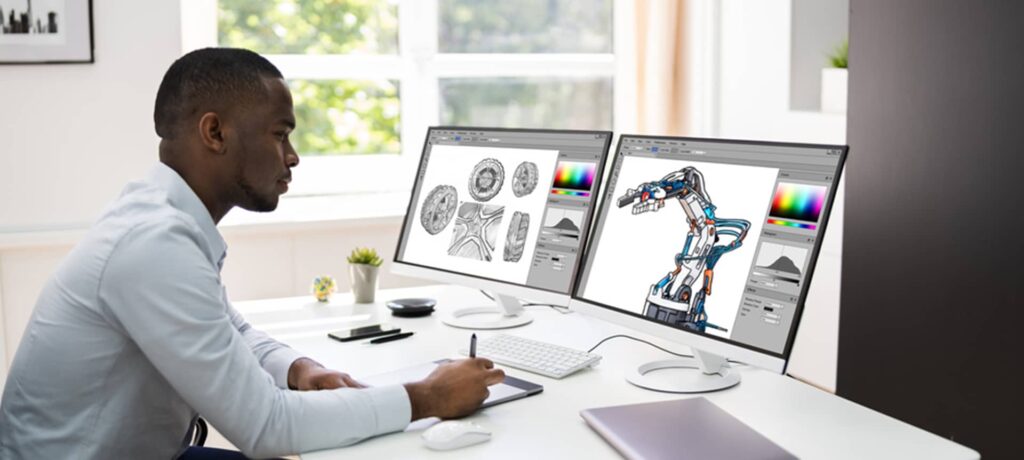A graphic designer’s work is vital in a society where images are more powerful than words. Graphic designers work their magic on many platforms, from the modern logos that define corporate identities to the alluring posters that entice us from billboards. However, what makes graphic design so exciting as a profession and what does a graphic designer actually do? Let’s explore graphic design in more detail and learn about its complexities as a creative discipline.
The Heart and Soul of Graphic Design
Graphic design is fundamentally the art of visual communication. It involves using text, graphics, and other visual elements strategically to convey ideas, thoughts, and messages. Whether they are developing an interface for a website, making product packaging, or producing marketing collateral for a campaign, graphic designers are essential in influencing how we see and engage with the world.
Skills That Define Success:
Having a broad range of skills is essential for graphic designers; inventiveness alone is not enough. The following essential competencies characterize success in this field:
Creativity: The foundation of graphic design is the capacity to think creatively and unconventionally in order to produce original solutions.
Technical proficiency: To make ideas come to life, one must be proficient with design programs like Adobe Photoshop, Illustrator, and InDesign.
Typography: Crafting aesthetically pleasing designs that successfully communicate the intended message requires an understanding of the subtleties of typography.
Communication: Since graphic designers frequently work with clients, colleagues, and other stakeholders, being able to communicate effectively is crucial to comprehending briefs and presenting ideas.
Attention to Detail: A design might succeed or fail based on everything from pixel-perfect alignment to carefully selecting a color scheme.
Adaptability: In the fast-paced world of graphic design, the capacity to adjust to shifting trends, technology, and client preferences is essential to remaining relevant.
The Creative Process:
A painstaking creative process is the driving force behind each magnificent design. Usually, there are multiple stages involved, such as:
Research: The first phase in the design process is to understand the objectives of the customer, the target market, and market trends.
Conceptualization: generating concepts and scribbling preliminary versions to experiment with various visual approaches.
Design development : involves using design software to bring the selected idea to life and experimenting with layouts, colors, and font to produce compositions that are visually appealing.
Feedback and Revision: To make sure the design complies with the project specifications, get input from clients and coworkers. Then, make necessary revisions to the design based on their suggestions.
Finalization: Ensuring that the completed artwork satisfies all technical requirements and quality standards before delivering it.
The Influence of Graphic Design:
Graphic design has a significant influence on how we live our daily lives, including how we perceive the world, how we make decisions, and even how we start societal change. Whether it’s a powerful logo that encourages brand loyalty or an insightful billboard that brings attention to significant concerns, graphic design has the ability to arouse feelings, spark ideas, and motivate action.
In summary
graphic designers are the unsung heroes who work behind the scenes to translate ideas into visuals and give thoughts life in a world where visual communication is king. Using a unique combination of artistic vision, technological proficiency, and strategic thinking, graphic designers influence how we see and engage with the world. Thus, the next time you see a masterfully designed piece, stop to acknowledge the creativity and resourcefulness of the gifted people who made it all possible.






